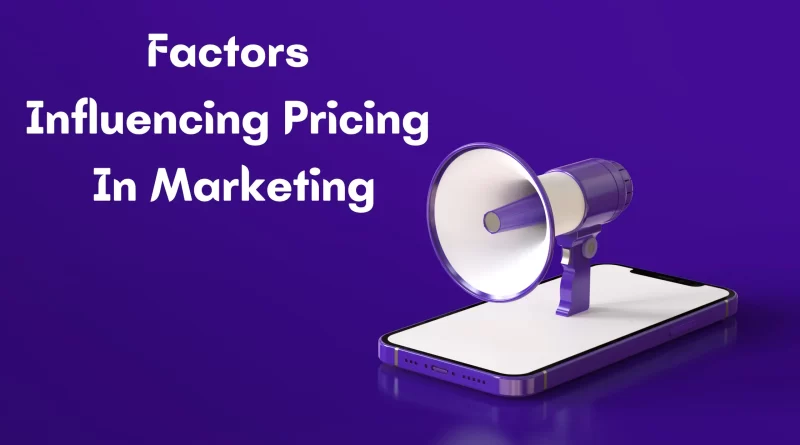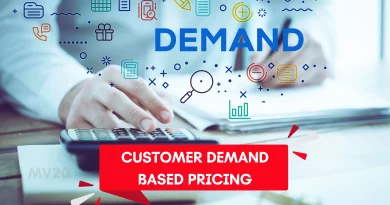Factors Influencing Pricing In Marketing [Explained With Clear Example!]
Pricing is one of the most important decisions a business has to make when it comes to their marketing strategy.
It can make or break a product’s success in the market, and it’s crucial to understand the factors that influence pricing in order to make informed decisions.
Here are some of the key factors that influence pricing in marketing:
Factors Influencing Pricing In Marketing
Production Costs
This is probably the most obvious factor that influences pricing. The cost of producing a product or providing a service will always be a major determinant in how much a business can charge for it. This includes the cost of raw materials, labor, and overhead expenses.
For example, if a company is producing a new type of smartphone, they will need to factor in the cost of components such as the screen, camera, and processor.
Besides, they will need to consider the cost of assembling the phone, packaging it, and shipping it to retailers. All of these costs will be taken into account when determining the final price of the phone.
Competition
Another important factor that influences pricing is competition. A business will need to consider the prices that their competitors are charging for similar products or services.
If a company’s competitors are charging significantly less for a similar product, it will be difficult for the company to charge a higher price.
For instance, if a company is selling a new electric car and the closest competitor is selling a similar car for a lower price, it will be tough for the company to charge a higher price for their car.
In this case, the company may need to consider lowering their price in order to stay competitive.
Market Conditions
The overall state of the market can also have a big impact on pricing. For example, during a recession, consumers may be more price-sensitive and less likely to pay premium prices for products.
In this case, a business may need to lower their prices in order to remain competitive and attract price-sensitive consumers.
While on the other hand, during a strong economy, consumers may be more willing to pay premium prices for products. So in such cases, a business may be able to charge higher prices for their products and still maintain good sales.
Brand and Product Image
A business’s brand and the image of their products can also have an impact on pricing. For example, if a company has a strong brand image and is known for producing high-quality products, they may be able to charge a premium price for their products.
But you know if a company has a weaker brand image and their products are not seen as being high-quality, they may need to charge a lower price in order to attract customers.
Distribution Channels
The way a product is sold can also influence its price. For example, if a product is sold through a high-end retail store, it may be able to command a higher price than if it were sold through a discount store.
Also know that the cost of distribution can also affect pricing. For instance, if a company has to pay high fees to get their products into retail stores, they may need to charge a higher price in order to cover those costs.
Target Market
The final one is a business’s target market can also have an impact on pricing. For example, if a company is targeting a luxury market, they may be able to charge a higher price for their products.
Whereas if a company is targeting a budget market, they may need to charge a lower price in order to appeal to those consumers.
Real-Life Example of How Factors Influence Pricing in Marketing!
Let’s take the example of a new luxury car brand, “Lux Motors,” that is entering the market.
Production Costs
Lux Motors uses only the highest quality materials and the latest technology to build their cars. The cost of raw materials and labor is high, but the company wants to maintain their reputation for producing luxury vehicles with cutting-edge features.
Competition
Lux Motors is entering a market that is already crowded with established luxury car brands like Mercedes-Benz, BMW, and Lexus. These brands have a strong reputation and loyal customers, so Lux Motors must be competitive with their pricing in order to attract new customers.
Market Conditions
The economy is currently doing well, and there is a high demand for luxury vehicles. Lux Motors can take advantage of this by charging a premium price for their cars.
Brand and Product Image
Lux Motors has spent a lot of money on advertising to build a strong brand image and promote their cars as the latest and greatest in luxury technology. This allows them to charge a higher price than some of their competitors.
Distribution Channels
Lux Motors will sell their cars through a select group of high-end dealerships, which will add to the exclusivity of the brand and allow them to charge a higher price.
Target Market
Lux Motors is targeting a luxury market, so they can charge a higher price for their cars than a company that is targeting a budget market.
So, based on these factors, Lux Motors can charge a premium price for their cars, which will help them to be successful in the luxury car market.
But understand this: if at any point, the market conditions change, for example, if a recession hits, and the demand for luxury cars decreases, Lux Motors might need to adjust their pricing strategy to remain competitive and attract price-sensitive consumers.
Final thoughts
Pricing is a complex and multi-faceted issue that must be carefully considered by businesses in order to be successful in the market. By clearly understanding the factors that influence pricing a business can make informed decisions about pricing that will help them to be successful.
And as a marketer and business owner one must always monitor and adjust pricing strategies as market conditions change.




